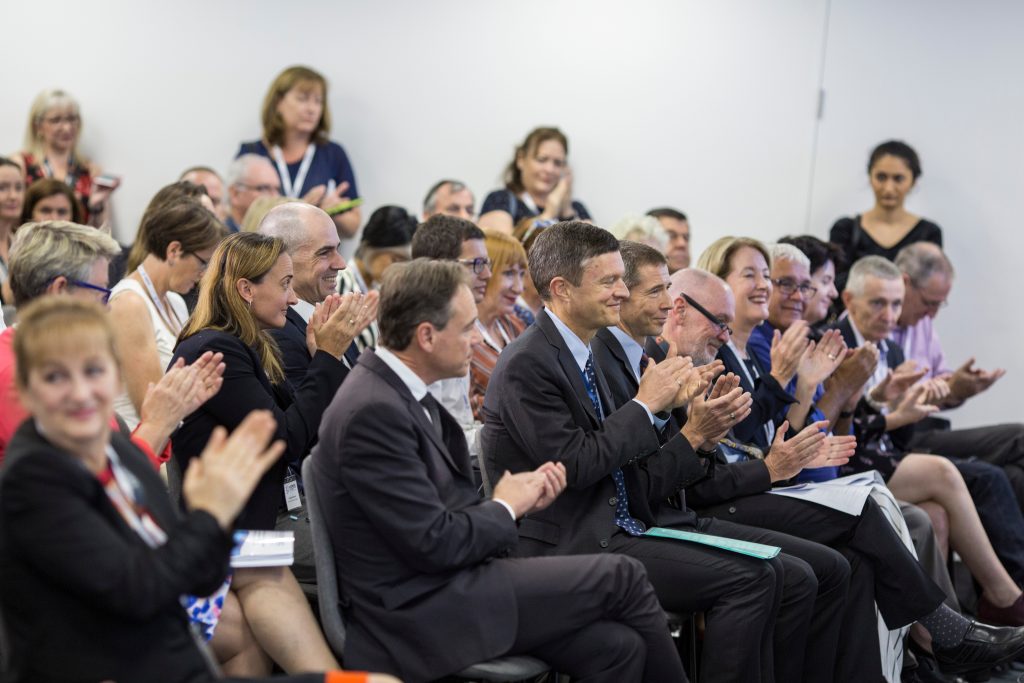Backgrounds and Aims
One of the key roles of ANZMUSC is to facilitate high quality clinical trials in the area of musculoskeletal health. The principal ways of doing this are to provide an advisory service for ANZMUSC members planning or conducting a trial (e.g. scientific and operational support to improve the design and conduct of the trial, fund-raising, dissemination of results/implementation plan, engagement with stakeholders, consumer input) and to endorse high quality clinical trials that are being conducted by its members.
What does endorsement mean?
Endorsement means more than a ‘rubber-stamp’ of approval. It includes a process of ensuring high quality trial design and conduct but also confers a degree of ‘ownership’ to ANZMUSC members.
Trials endorsed by ANZMUSC will need to be prospectively registered, conform to best practice guidelines (e.g. those from the Equator Network) and regulatory standards (e.g. ICH GCP, National Statement), require regular reporting to ANZMUSC and presentation of updates at the annual scientific meeting, and agree to abide by ICMJE authorship guidelines and ANZMUSC Publication policy.
ANZMUSC endorsement will provide benefits to both parties: ANZMUSC will gain greater recognition in the research community to enable it to act as a peak body for musculoskeletal research and to achieve its goals. Trialists and their trials will benefit from methodological input, and ANZMUSC endorsement may assist with gaining community and professional acceptance, funding, and implementation.

Process of ANZMUSC endorsement
The following process is required for all studies seeking ANZMUSC endorsement. All applicants will apply to present their trial in an open forum at an ANZMUSC meeting. Only proposals that fit ANZMUSC criteria will be accepted. Presentations will normally occur at the annual ANZMUSC scientific meeting.
- Following the open forum, trialists that feel their trial is fully developed may submit an endorsement application to the Executive Committee. This is done by submitting an application form and a copy of the trial protocol. The application is then sent to the Scientific Advisory Committee (SAC) and Consumer Advisory Group (CAG for review).
- Reviews are completed by two members of the SAC and two consumers of the CAG. Reviewers will be asked to provide comments to the trialists within 2 weeks of submission. In the rare instances where this is not possible, triallists will be notified and an acceptable time frame agreed with the trialist. Trialists will be asked to provide responses to comments to the SAC and CAG within 2 weeks of submission. In the rare instances where this is not possible, the SAC Chair will be notified and an acceptable time frame agreed with the trialist.
- SAC Chair and CAG chair to present endorsement recommendations, reviewers’ comments and responses to EC for final decision. The EC will decide to endorse, not endorse, or suggest further development.
- The applicant is notified of the decision with a formal letter from the Executive Committee within six weeks of submission. This letter lists the conditions and requirements of endorsement that must be accepted by the applicant.
- Projects marked for development will need to be revised and resubmitted totheExecutive Committeefor endorsement. This process is expected to involve interaction between the investigators and the SAC / condition specific working group prior to resubmission in order to increase the likelihood of endorsement.
Criteria for ANZMUSC endorsements
Only clinical trials in the field of musculoskeletal health will be considered and must:
- Satisfy an ANZMUSC research priority (reflecting important disease burden and an important evidence or evidence-practice gap)
- Present evidence confirming that the research question is one that the clinical and/or consumer community want answered
- Be of high quality (e.g. minimising risk of bias, ensuring appropriate power) and include an economic evaluation and process measures where relevant
- Be feasible (reflecting cost, logistics, track record and likely recruitment rate)
- Show strong potential to change practice and/or policy (reflecting academic impact, implementation, and generalisability)
- Be multicentre (to encourage collaboration, increase power and increase implementation of findings). Multicentre means that participants are recruited from more than one hospital/research institute/practice or university site. Trials that include sites across multiple regions, states or territories or countries will be highly regarded.
- Have clear evidence of consumer partnership during the design of the trial and plans to actively engage with consumers in the dissemination of results.
- Have a Chief Investigator who is a registered full member of the ANZMUSC Clinical Trials Network.

